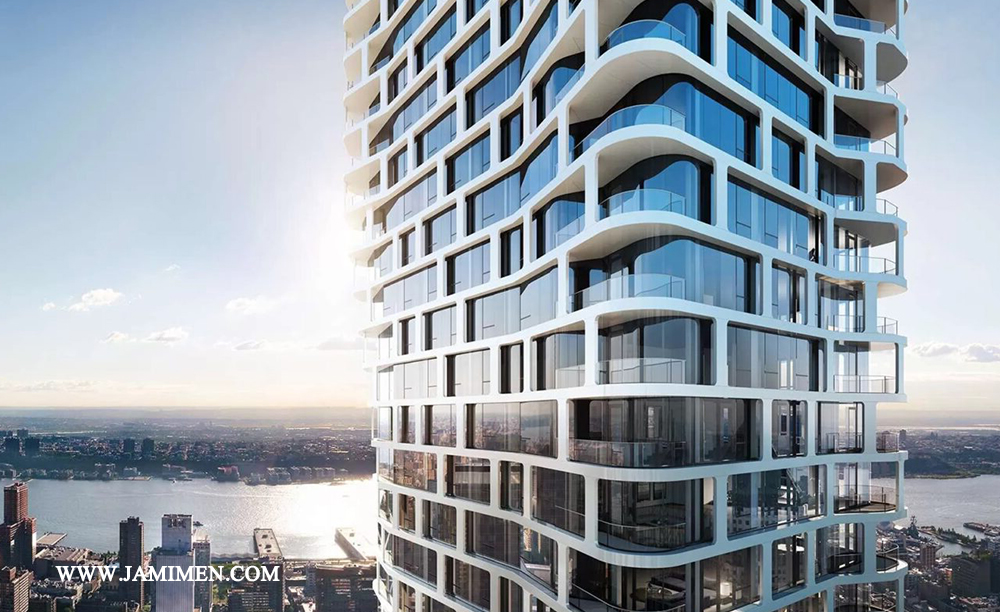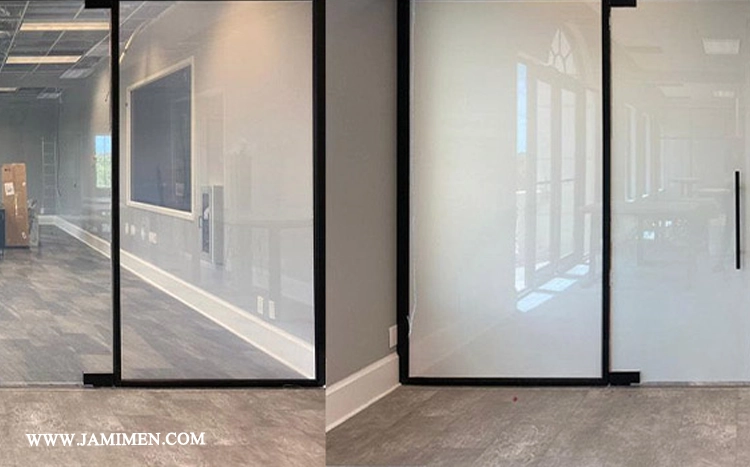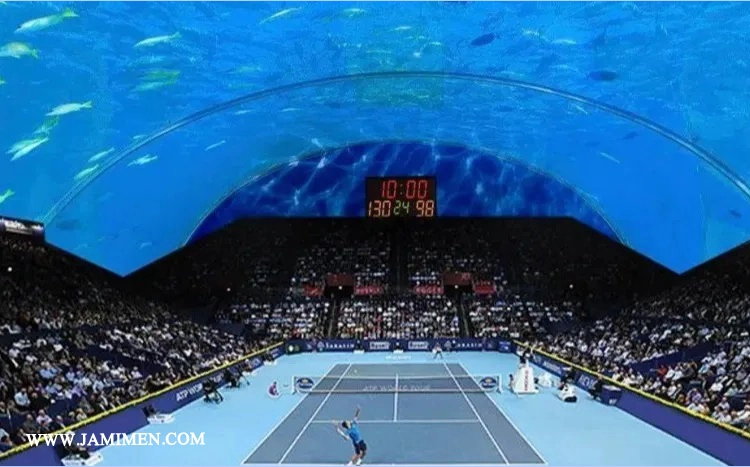Curtain Wall Facades
Curtain wall glazing is vital in modern architecture, serving a purpose beyond mere aesthetic appeal.

Curtain Wall Facades: A Gateway to Beauty and Functionality
Curtain wall glazing is vital in modern architecture, serving a purpose beyond mere aesthetic appeal. It shapes the building's visual identity while acting as a barrier against environmental factors, ultimately impacting the quality of life for occupants. Selecting the appropriate type of curtain wall glazing, considering both function and aesthetics, is crucial to creating an ideal space.

History and Evolution of Building Facade Glass: A Journey from Past to Present
From humble beginnings to towering glass structures:
The use of glass in building facades has a long-standing history. Its roots can be traced to ancient times when colored glass was utilized in religious buildings and palaces. During the Middle Ages, advancements in glassmaking techniques led to larger glass panes in windows and facades.
The Industrial Revolution and the Emergence of Modern Glass Facades (Curtain Wall):
The Industrial Revolution marked a pivotal moment in building facade glass. The invention of mass production methods for glass opened a new door to the widespread use of this element in facades. During this period, we witnessed the emergence of tall buildings with glass facades that symbolized modernity and progress.
Modernity and Diversity in Facade Glass:
Today, the diversity in building facade glass is such that architects can showcase their creativity. Tempered, laminated, double and triple-glazed, reflective, colored, and patterned glasses are a few examples of this diversity.
Facade Glass: Beyond Aesthetics:
Building facade glass is no longer merely a decorative element. It plays a vital role in sound and thermal insulation, enhancing the quality of life for occupants and saving energy consumption.
The Future of Facade Glass:
With technological advancements, we are witnessing continuous innovations in building facade glass. Smart, self-adjusting, and curved glasses are examples of these innovations that will shape the future of this industry.
In this journey full of ups and downs, building facade glass has transformed from its early roots in ancient times into an integral element in modern architecture. This element's diversity, functionality, and beauty have made it an ideal choice for architects and designers.
Perhaps in the not-so-distant future, we will see skyscrapers with fully smart glass facades that interact with the environment and help improve the quality of human life.
Light and Color Dance in the Frame of Glass: The Unparalleled Diversity of Facade Glasses
Glass, Beyond Aesthetics:
Glass in building facades serves a role beyond mere aesthetic appeal. This element shapes the visual identity of a building while acting as a barrier against environmental factors, ultimately impacting the quality of life for its occupants. Choosing the appropriate type of facade glass, considering both functionality and beauty, is crucial to creating an ideal space.

Types of Building Facade Glass (Curtain Wall):
A Journey into the Colorful World of Facade Glasses:
• Tempered Curtain Wall Glass:
The most resistant type of glass, 5 to 7 times stronger than ordinary glass, is suitable for locations requiring high strength.
• Laminated Glasses:
Secure glass, in case of breakage, its particles adhere together, preventing them from scattering.

• Double and Triple-Glazed Glasses:
Ideal sound and thermal insulation to reduce energy consumption and increase residents' comfort.
• Reflective Glasses:
Reflecting sunlight and heat, it is suitable for tropical areas.

• Colored Glasses:
Unparalleled color variety, creating creative facades suitable for any taste.
• Patterned Glasses:
Creating beautiful and unique patterns on glass for remarkable facades.
• Smart Glasses:
Regulating the amount of light and heat passing through the glass according to environmental conditions is ideal for smart homes.
• Curved Glasses:
Creating curved and creative facades for a modern and unique appearance.

Application of Curtain Wall:
Due to its beauty, elegance, and numerous advantages, the curtain wall is used in various types of buildings, including residential, commercial, office, cultural, and more.
Some of the applications of curtain wall:
• Commercial and Office Buildings:
Curtain walls in these types of buildings create a modern and luxurious facade, helping to allow natural light into the building.
• Residential Buildings:
Curtain walls in apartments and villas create a bright and pleasant space, allowing residents to enjoy the outside view.
• Cultural Buildings:
Curtain walls in museums, libraries, and cultural centers create a transparent and inviting space.
• Sports Facilities:
Curtain walls in stadiums and sports halls allow spectators to view the playing field from all angles.

An Ideal Choice for Every Taste and Need:
With the unparalleled diversity of facade glasses, an ideal choice exists for every taste and need. Architects and designers can creatively utilize this variety to create beautiful, efficient facades.
Advantages of Using Curtain Wall Glass:
• Beauty and Elegance: Curtain wall glass provides a modern and unique appearance to the building, inducing a sense of spaciousness and lightness.
• Natural Light: The passage of natural light through the glass creates a bright and pleasant atmosphere inside the building and helps save energy.
• Sound and Thermal Insulation: Double and triple-glazed glasses can be adequate sound and thermal insulators, enhancing residents' comfort and reducing energy consumption.
• Variety in Design and Color: There is a wide variety of designs, colors, and dimensions of curtain wall glasses available, enabling the creation of creative facades suitable for any taste.
• Easy Cleaning and Maintenance: Facade glasses are easily washable and maintainable, preserving their beauty over time.
Points to Consider in Choosing Curtain Wall Glass:
• Building Usage: The building usage type significantly influences the curtain wall glass choice. For example, transparent glasses are used in office and commercial buildings due to the need for more natural light.
• Climatic Conditions: Climatic conditions of the region are a crucial factor in selecting the type of curtain wall glass. For instance, reflective glasses reduce heat absorption in hot and dry areas.
• Safety: The use of tempered and laminated glasses enhances the safety of the building facade.
• Budget: The price of curtain wall glasses varies depending on their type, design, color, and dimensions.
Innovative Technologies in Curtain Wall Glass Production: Crossing the Boundaries of Architecture

Building Facade Glasses, Beyond Beauty:
Today, building facade glasses are not merely considered decorative elements. This component plays a vital role in sound and thermal insulation, enhancing the quality of life for residents and saving energy.
Innovative Technologies, a Gateway to Efficiency and Beauty:
Technological advancements have opened up new avenues for producing curtain wall glasses with enhanced efficiency and beauty. In this article, we delve into some of these innovative technologies:
1. Thermal Insulation Glasses:
Using state-of-the-art technologies, these glasses prevent heat loss in winter and heat gain in summer, improving building energy efficiency.
2. Self-Cleaning Glasses:
Using nanotechnology, these glasses' surface is designed so that dust and dirt do not adhere easily, and rain naturally cleans them.
3. Fire-Resistant Glasses:
These glasses are resistant to fire and can prevent the spread of fire.
4. Smart Glasses:
These glasses can adjust the amount of light and heat transmission based on environmental conditions.
5. Solar Cells:
This technology allows the use of sunlight to generate electricity.
6. Curved Glasses:
These glasses enable the design of curved and creative facades.
These innovative technologies in curtain wall glasses have shifted architectural boundaries and made it possible to create buildings with maximum efficiency and beauty. These innovations herald a bright future in the construction industry.

Continuing, we highlight several examples of the applications of these technologies:
- Utilizing thermal insulation glasses in office and commercial buildings to reduce energy consumption.
- Employing self-cleaning glasses in hospitals and medical centers to maintain environmental hygiene.
- Installing fire-resistant glasses in hotels and residential towers to enhance safety.
- Integrating smart glasses in smart homes for regulating indoor lighting and temperature.
- Incorporating solar cells in office and commercial buildings for electricity generation.
- Using curved glasses in cultural and artistic structures to create unique spaces.
Choosing the appropriate type of curtain wall glass, considering the building's usage, climatic conditions, and budget, is crucial to creating an ideal space.
Benefits of Curtain Wall Glass Compared to Other Building Facades:
Curtain walls, also known as glass facades, have become one of the most famous building facades in recent years due to their numerous advantages. Below, we examine the benefits of this type of facade compared to other facades:
Beauty and Elegance:
With its use of glass, the curtain wall provides a modern and luxurious appearance to buildings. It allows natural light to pass through, creating bright and pleasant spaces.
In comparison to:
- Composite Facades: The curtain wall offers much greater variety in design and color than composite facades.
- Metal Facades: The curtain wall is more delicate and modern than metal facades.
- Stone Facades: Curtain walls appear more modern and contemporary than stone facades.
- Ceramic Facades: The curtain wall has a more delicate and transparent appearance than ceramic facades.
2. Variety in Design and Color:
Curtain walls can be executed in various designs and colors, harmonizing with any architectural style and taste. It can incorporate colored, reflective, frosted, patterned glasses.
Compared to other building facades:
The variety in design and color of curtain wall facades far exceeds that of composite, metal, stone, and ceramic.
3. Sound and Thermal Insulation:
Using double or triple-pane glasses, the curtain wall can provide sound and thermal insulation, aiding in energy conservation. This is especially important in noisy or adverse weather conditions.
Compared to other building facades, curtain walls offer better sound and thermal insulation than composite facades.

4. Easy to Clean:
A curtain wall is easily cleanable and requires minimal maintenance. Mild detergent and water can be used to clean this type of facade.
In comparison to:
- Composite Facades: Curtain walls are easily washable, while composite facades require more frequent cleaning due to pollution absorption.
- Metal Facades: Curtain walls are easily washable, but metal facades require more care and maintenance due to susceptibility to rust.
- Stone Facades: Curtain walls are easily washable, but stone facades require thorough cleaning due to their porous nature.
Combining Curtain Wall with Other Building Facades:
Due to its beauty, elegance, and numerous advantages, the curtain wall has become one of the most famous building facades in recent years. One appealing idea for designing a building facade is combining curtain walls with other facades. This can contribute to creating diversity and beauty in the facade and highlighting specific parts of the building.
Advantages of Combining Curtain Wall with Other Facades:
1. Creating Diversity and Beauty in the Facade: Combining curtain walls with other facades can help create diversity in the design and color of the facade. This can enhance the attractiveness of the building facade and make a unique appearance.
2. Highlighting Certain Parts of the Building: By combining curtain walls with other facades, certain building parts, such as the entrance or roof edges, can be emphasized. This can contribute to the beauty and attractiveness of the building facade.
3. Adaptability to Various Uses: Curtain walls can be combined with various facades and used in different types of buildings, including residential, commercial, office buildings, hotels, etc.

Considerations for Combining Curtain Walls with Other Facades:
- Selection of Facade Type: When choosing the type of facade and combining them, consideration should be given to the building's usage, climatic conditions, and budget.
- Coordination in Facades: Colors and materials should be used in proportion and harmony to create harmony in the facade.
- Lighting: Lighting can highlight the combination of curtain walls with other facades.
Combining curtain walls with other facades can create a unique and attractive appearance for your building.
Glass Facade Architecture: Dance of Light and Creativity
Glass, a magical element in modern architecture, adds to the beauty and functionality of a building by allowing light to pass through and creating a bright and pleasant space. Prominent architects worldwide have used glass as a critical element in building facades, creating masterpieces that inspire architects and designers today.
Foremost Designers and Architects:
- Ludwig Mies van der Rohe:
The German-American architect, known as the "father of modern architecture," pioneered using glass in building facades. The Seagram Building in New York is one of his most famous works, symbolizing modernity and elegance with its glass facade.
- Norman Foster:
The English architect, a recipient of the Pritzker Prize, is famous for his sustainable and environmentally friendly designs. The Gherkin building in London is one of his most famous works, known for its unique glass facade, symbolizing modern architecture.
- Frank Gehry:
The Canadian-American architect, also a Pritzker Prize winner, is famous for his creative designs and unconventional forms. The Guggenheim Museum Bilbao in Spain is one of his most famous works. It is a unique artistic masterpiece recognized for its glass and titanium facade.
Prominent Works:
- Seagram Building, New York: Ludwig Mies van der Rohe's masterpiece, with its unparalleled glass facade, symbolizes modernity in architecture.
- The Gherkin, London: Norman Foster's work, with its unique glass facade, is recognized as a symbol of modern architecture.
- Guggenheim Museum Bilbao, Spain: Frank Gehry's masterpiece, with its glass and titanium facade, is recognized as a unique artistic masterpiece.
Selecting the appropriate type of glass facade, considering the building's usage, weather conditions, and budget, is crucial to creating an ideal space.
Safety and Security of Glass Facades: A Glassy Tranquility
Glass, a beautiful and practical element:
Glass is a beautiful and practical element in modern architecture that enhances the beauty and functionality of a building by allowing light to pass through and creating a bright and pleasant space. However, using glass in building facades raises concerns about safety and security.
Standards and Innovative Technologies:
Fortunately, there are modern standards and technologies aimed at enhancing the safety and security of glass facades, which can address these concerns to a great extent.

Some of these standards and technologies include:
- Use of tempered glass:
Tempered glass is 5 to 7 times stronger than ordinary glass and highly resistant to impact and thermal shock.
- Use of laminated glass:
Laminated glass consists of two or more layers of glass bonded with a PVB layer. In case of breakage, the glass particles stick together, preventing them from shattering.
- Use of appropriate fittings and connections:
Appropriate fittings and connections play a crucial role in maintaining the safety of the glass facade.
- Use of anti-theft systems:
Anti-theft systems can prevent burglars from entering through the glass facade of the building.
Building Glass Facade Pricing: Influencing Factors and Analysis
The Curtain Wall, one of the primary and attractive elements in the design and construction of modern buildings, is considered. However, the price of this essential material in the construction process can be a determining factor for organizations and constructors in deciding to use it in buildings. In this section, we will examine the factors influencing the price of building glass facades and analyze this price in the contemporary market.
Determining Factors of Price:
1. Type and Quality of Glass: The type and quality of glass can be a fundamental determining factor of the price. High-quality glasses and advanced technologies usually have higher prices.
2. Size and Dimensions: The dimensions of the glass used in the building facade play a significant role in determining the price. More giant and custom-sized glasses usually incur higher costs.
3. Price Influencing Factors: Each of these factors has a direct impact on the final price of the glass, including:
- Dimensions (especially in reflex, and satin glasses) by calculating the waste.
- Type of girinding and its matte or polished appearance.
- Customizable request process with special automated machinery (CNC).
- Technical specifications such as types of separation or drilling, which vary from drill bit diameter to perimeter drilling, affect the final price significantly.
- Adding printing.
- bended or flat.
- Lamination or double glazing.
- Special packaging.
4. Production and Distribution Location: The production and transportation costs of glass can also significantly impact its price. Glasses produced farther away may have higher prices.
Analysis of Building Glass Facade Pricing in the Market:
In the current market, the price of building glass facades is influenced by various economic factors. Fluctuations in prices of raw materials such as glass and changes in demand and supply can play a significant role in determining the price. Additionally, competition among manufacturers and changes in production technologies can considerably impact the cost.

Jamimen Manufacturing Company:
The Jamimen Manufacturing Company, with over 25 years of experience producing various types of building glasses, including tempered, laminated, double-glazed, and triple-glazed glasses, is proud to be recognized as one of the top glass manufacturers in Iran. By utilizing state-of-the-art technical knowledge and using high-quality raw materials, this company offers products of excellent quality that have satisfied customers.
At Jamimen, we provide specialized consultation to assist you in choosing the appropriate type of facade glass, enabling you to achieve beauty, functionality, and comfort with an ideal selection. For further consultation and information, feel free to contact us.
Conclusion:
The building's glass facade is more than just a visual beauty element. This component shapes the visual identity of the building while acting as a barrier against environmental factors and affecting the quality of life for occupants.
Choosing the suitable type of facade glass, considering functionality, beauty, weather conditions, and budget, is crucial to creating an ideal space. The diverse range of facade glasses, from tempered and laminated to double-glazed and reflective, colored, patterned, innovative, and curved, provides an ideal choice for every taste and need.
One can achieve ideal beauty, functionality, and comfort in modern architecture through creativity and innovation in selecting and using facade glass.
• Visit the jamimen Company website.
• Follow us on social media.
• Contact us for a free consultation.
With jamimen , gift your building with beauty and functionality.









